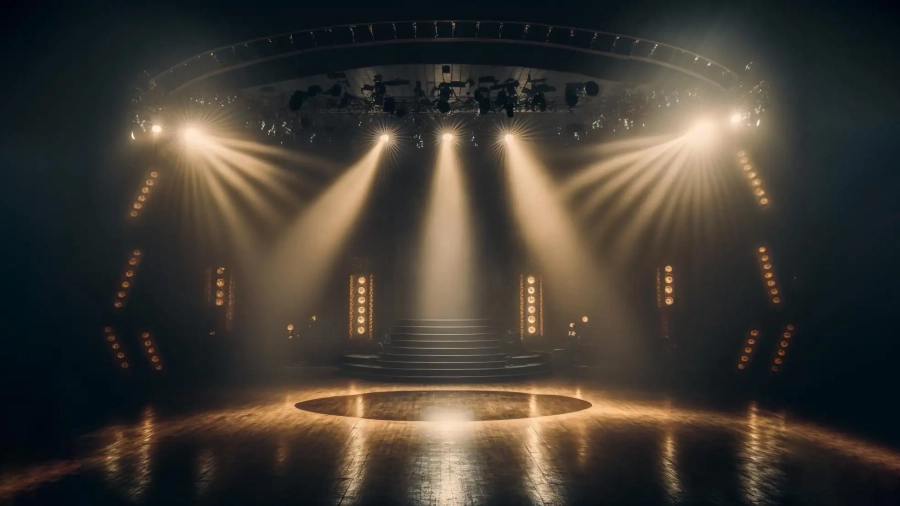The decision between renting and purchasing used stage lighting is pivotal. This choice can significantly impact your budget and the quality of your production. With the rise of companies like GearSource, which offer extensive options for renting and buying used stage lighting, it’s crucial to understand the benefits and drawbacks of each approach.
It’s essential to understand what stage lighting entails. Used stage lighting refers to equipment that has been previously owned and utilized in various settings. This equipment ranges from basic LED lights to sophisticated moving head fixtures and everything in between.
Renting Used Stage Lighting: Flexibility and Cost-Effectiveness
Renting used stage lighting is an attractive option for many, primarily due to its flexibility and lower upfront costs. Here are some key advantages:
1. Lower Initial Investment: Renting requires a significantly lower initial investment compared to buying. This is particularly beneficial for one-time events or infrequent productions.
2. Access to High-Quality Equipment: Renting allows access to high-end lighting equipment that might be too expensive to purchase outright.
3. No Maintenance Worries: Maintenance and repairs are generally handled by the rental company, reducing the burden on the user.
4. Flexibility: Renting offers the flexibility to choose different lighting for each event, keeping your productions fresh and innovative.
Buying Used Stage Lighting: Long-Term Investment and Customization
On the other hand, purchasing used stage lighting is an investment in the long-term success of your productions. Here are some benefits of buying:
1. Cost-Effective in the Long Run: Buying can be more cost-effective over time for frequent users. The initial higher investment pays off as you use the equipment repeatedly without additional rental fees.
2. Customization and Familiarity: Owning your equipment allows customization according to specific needs. Users also become familiar with their equipment, ensuring consistency in performance.
3. Asset Ownership: Purchased equipment is an asset that can be resold or leased out, offering potential financial returns.
4. Availability: Owning your equipment ensures it’s available whenever you need it, without the constraints of rental periods.
Making the Right Choice
The decision between renting and buying used stage lighting hinges on several factors:
- Frequency of Use: Purchasing may be more economical if you host or produce events frequently. For occasional use, renting is likely more cost-effective.
- Budget Constraints: Assess your budget. If upfront costs are a concern, renting may be the better option.
- Storage and Maintenance: Consider whether you have the space and resources to store and maintain the equipment if you purchase it.
- Specific Requirements: Purchasing those specific items might be more practical if your production requires highly specialized lighting.
Evaluating the Impact on Production Quality and Creative Possibilities
When considering whether to rent or buy used stage lighting, it’s crucial to assess how each option influences your productions’ quality and creative potential. This decision can significantly affect your events’ visual impact and overall success.
Quality Consistency
Renting: Renting equipment from reputable sources like GearSource ensures access to high-quality, well-maintained lighting for each event. This option guarantees that even the most sophisticated lighting needs are met with professional standards. However, the variability of equipment from one rental to the next can pose challenges in maintaining consistency.
Buying: Purchasing used stage lighting allows for consistent quality, as the equipment is familiar and can be fine-tuned to specific needs over time. This consistency is crucial for companies or individuals who aim for a signature look or have recurring events with similar technical requirements.
Creative Flexibility
Renting: Renting offers the freedom to select different lighting for each production, which can significantly enhance the creative appeal. This flexibility is ideal for those who wish to experiment with various styles or keep up with the latest trends in stage lighting without committing to a single type of equipment.
Buying: While buying limits creative options to the types of lights owned, it also allows for deeper exploration and customization of the available equipment. Owners become adept at manipulating their equipment in innovative ways, potentially leading to unique lighting effects that might not be achievable with rented gear.
Technical Support and Expertise
Renting: One of the advantages of renting is the access to technical support and expertise from the rental company. This support can be invaluable, especially for complex setups or troubleshooting during events. Rental companies often provide guidance and assistance, ensuring the lighting operates optimally.
Buying: Purchasing equipment necessitates a higher degree of self-sufficiency in terms of technical know-how. It encourages the development of in-house expertise as the technical team becomes more familiar with the equipment’s nuances. This learning curve can be steep but ultimately rewarding in terms of skill development and self-reliance.
Long-term Skill Development
Owning stage lighting equipment encourages the technical team to deepen their understanding and skills. This expertise is about operating the equipment and involves learning about maintenance, repair, and creative utilization. Over time, this can lead to a high level of proficiency, benefiting the production quality significantly.
Partner with GearSource for Your Stage Lighting Needs
Both renting and buying used stage lighting have their merits. Your choice should align with your production frequency, budget, and specific requirements. For those seeking quality used stage lighting, GearSource offers a comprehensive solution. Whether you rent or buy, GearSource’s extensive inventory and expert assistance ensure you find the perfect lighting solutions. Visit GearSource today to explore your options and take the first step towards a cost-effective and successful production.

